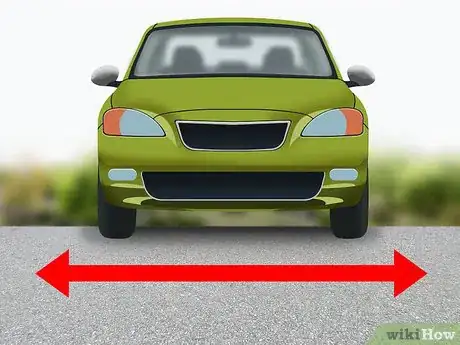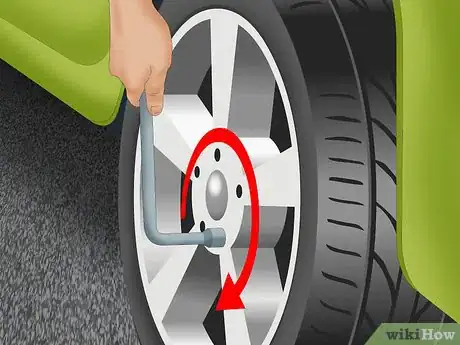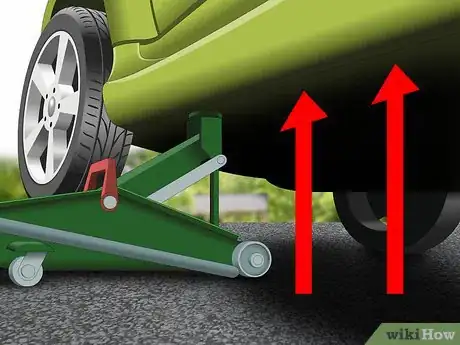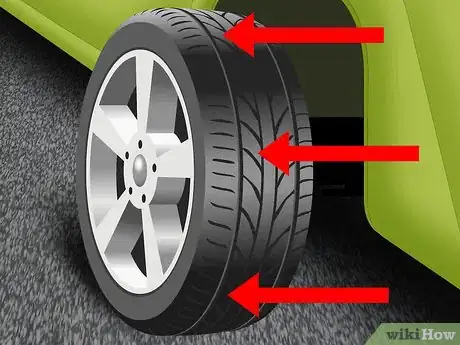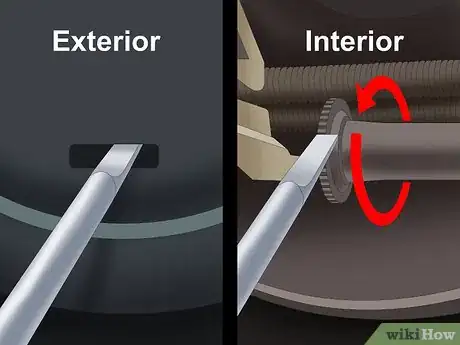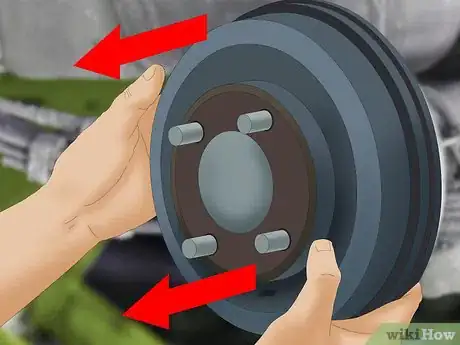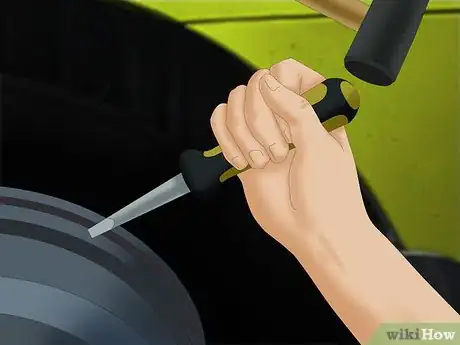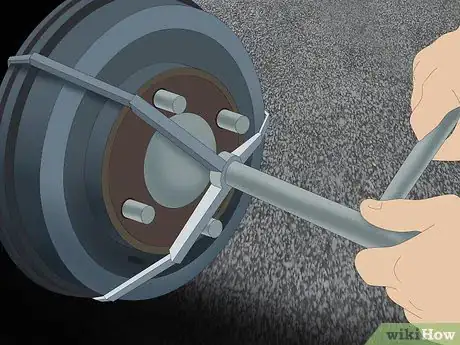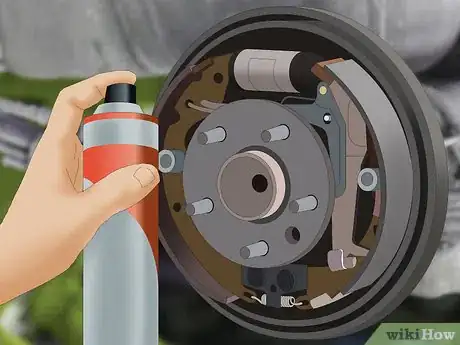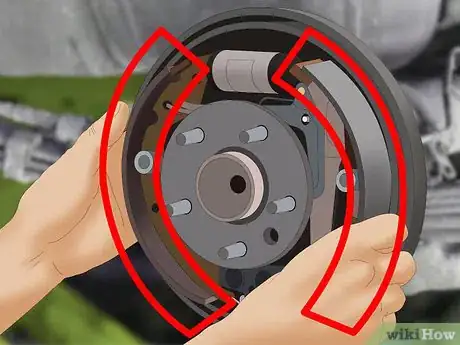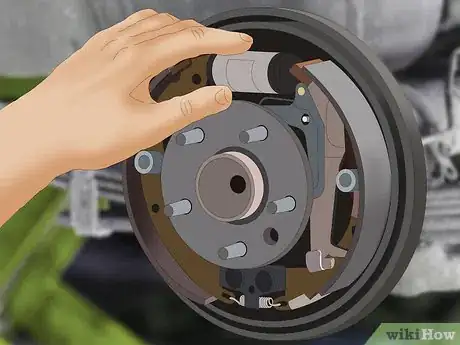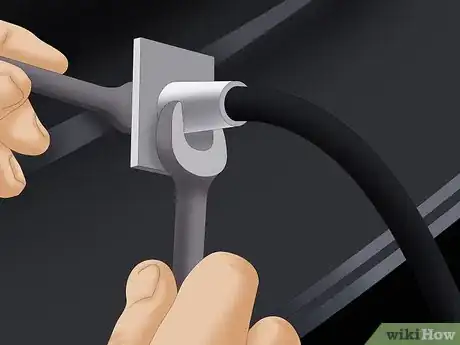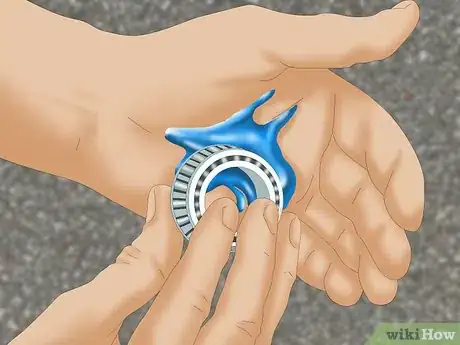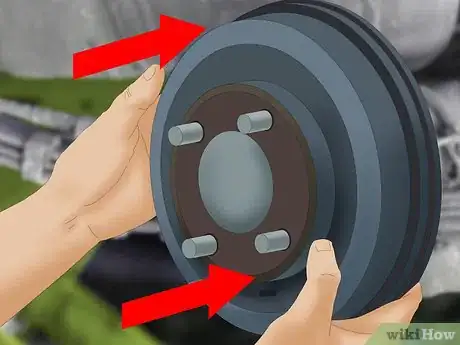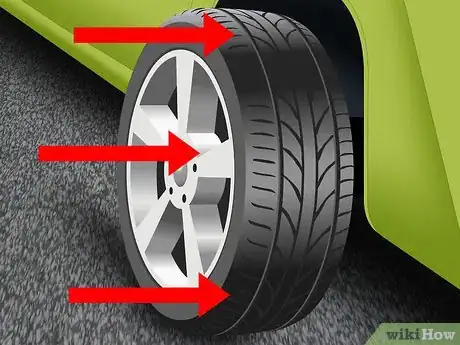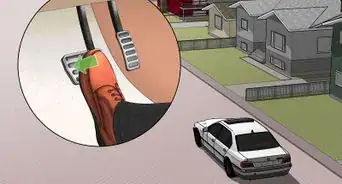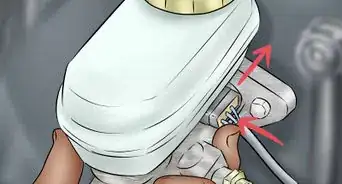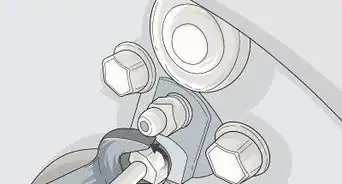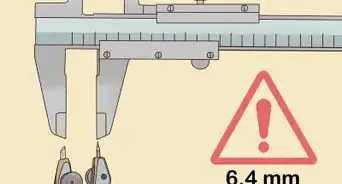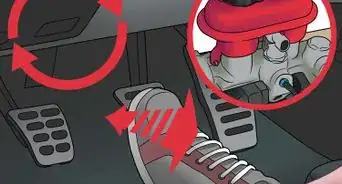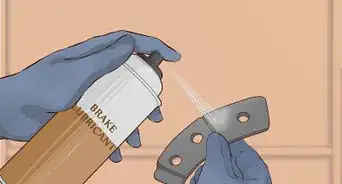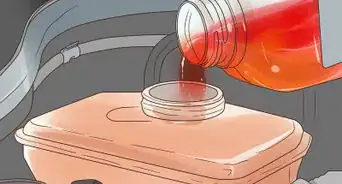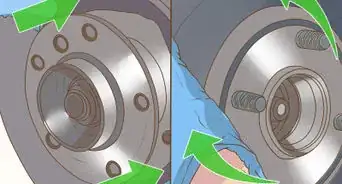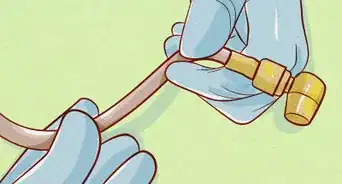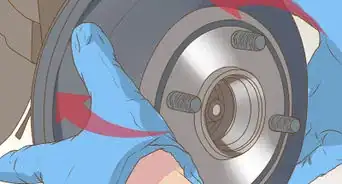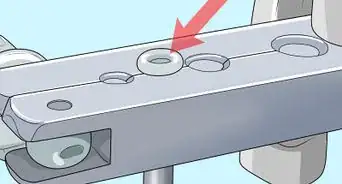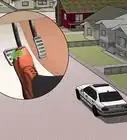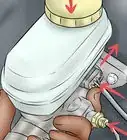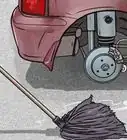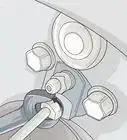This article was co-authored by Howard Fleischmann. Howard Fleischmann is an Automotive Tire and Repair Specialist and the CEO of Community Tire Pros & Auto Repair, with ten locations throughout Phoenix, Glendale, Yuma, and Casa Grande, Arizona. Howard specializes in full-service auto repair and tire replacement and care for domestic/imported vehicles and large trucks. Howard’s dedication to Community Tire Pros & Auto Repair has earned their team multiple awards and features including the 2021 Phoenix Magazine AZ State 48 “Best of the Best!”, the 2020 “Best of Phoenix” in Auto Repair, the 2013 Master SBD award, the 2013 National “Top Shop” award by Tire Review, the 2012 Diversity Champions Phx Business Journal, the 2009 BBB Ethics award, the 2008 Phx Chamber of Commerce Impact Award -” Small Business of the Year”, and the 2008 ASU Spirit of Enterprise award. Howard is often referred to as “The Car Guy” for local TV stations and is a regular on TV’s Channel 3 Sunday, Good Morning Arizona monthly.
This article has been viewed 257,737 times.
Drum brakes (as opposed to disc brakes) are a braking system that slows a vehicle by pressing brake shoes into the inside surface of a metal drum attached to the wheel to create friction. Like any braking system, drum brakes undergo wear and tear with use. Brake drum maintenance and replacement requires that you first remove the old brake drums from the wheels. This procedure is usually fairly simple, requiring no more than a half hour or so and common vehicle maintenance tools.
Steps
Taking the Wheel Off
-
1Park the vehicle in a clear, flat area.
- Turn the vehicle off and make sure that it's in park with the emergency brake on to minimize the danger of rolling.
- Put on protective eyewear — goggles with a face guard or hard safety glasses work well.[1]
- Gather your tools and materials before proceeding.
-
2Loosen the lug nuts before raising the vehicle.
- Grab your tire iron and give each lug nut one turn or so in the counterclockwise direction. Do not remove the lug nuts yet — only loosen them.
- If you wait until the vehicle is on a jack, it can be quite difficult to remove tight lug nuts. Loosening them before using a jack allows the ground to hold the wheel in place so that you can get enough leverage against the nuts to break their initial resistance.
Advertisement -
3Lift the vehicle with a jack.
- Attach a jack to the vehicle near the brake drum to be removed. Pick a sturdy metal part of the vehicle's undercarriage for the jack — don't put it under any plastic molding or flimsy metal parts or it may damage them when the car is lifted.
- Safely and gradually raise the vehicle with the jack. If you're unsure of how to do this, follow the instructions that came with the jack for attaching it and raising the vehicle. Alternatively, check out our guide on changing a tire for more information.
- Use jack stands or sturdy wooden blocks to support your vehicle. Never use materials like cinder blocks which can break or compress under the weight of the vehicle with potentially deadly results.[2]
- Place wheel chocks around the wheels to secure the vehicle as you raise it.
-
4Unscrew the lug nuts and remove the wheel.
- Use your tire iron to finish removing the loosened lug nuts from their bolts.
- If necessary, remove the hubcap and use it as a convenient "dish" or "plate" to hold your lug nuts.
- When all the lug nuts are off, pull the tire away from its mounting. If you haven't done this before, don't remove more than one wheel at once — it can be handy to use the other wheel as a reference when you're putting everything back together.
Disassembling the Drum
-
1Turn the adjuster screw to loosen the shoes.
- Locate the access hole on the outside of the brake drum.
- Turn the brake drum so that the access hole is aligned with the drum's adjuster screw. The adjuster screw is large and slotted, and is located beneath just beneath the centerline that runs horizontally across the back of the drum.
- Turn the adjuster screw counterclockwise until it comes to a halt. The shoes on the drum should come loose from the wheel.
- Pull the drum off of the wheel. If the drum will not come off the wheel, unscrew the drum and pull it off (see below).
-
2Unscrew the brake drum if needed.
- Use a screwdriver to remove the screws securing the brake drum to the wheel.
- Draw the brake drum forcefully towards you.
- Use a screwdriver and rubber mallet or a brake drum puller to take the drum off of the wheel if you are unable to remove the drum by unscrewing it and pulling it.
-
3If you're having trouble, use a screwdriver and rubber mallet.
- Slide the screwdriver beneath the flange of the drum.
- Use the mallet to hammer against the top of the screwdriver's handle or the drum itself (lightly). Don't bring the mallet down with excessive force — you want to use it to pry the drum away from its mounting, not chisel away at it.
-
4Alternatively, remove the brake drum with a brake drum puller.
- Place each of the brake drum puller's 3 hooks evenly around the brake drum's flange.
- Ensure that the screw in the middle of the brake drum puller lies above the middle of the wheel hub.
- Use a screwdriver to attach the brake drum puller's screw tightly. Tighten the screw until the brake drum puller is securely fastened around the brake drum. Do not over-tighten the screw on the brake drum puller.
- Knock the back of the brake drum lightly with a hammer. Tap the hammer against the brake drum with an outward motion. The brake drum should come loose from the wheel.
Working on the Drum and Wheel
-
1Clean the drum.
- Over time, brake drums can accumulate a good amount of grime and debris simply from their normal use. Once you have the brake drum off, take the opportunity to clean it of this debris if needed.
- Sources differ on which types of cleaning solutions you should use. Some recommend only specially-formulated brake cleaner, while others say that you can usually get away with soap and water.[3]
-
2Replace the shoes.
- Over time, the shoes which press against the inside of the drum can become worn (much like brake pads do for disc brakes). Check your manufacturer's specifications — if your brake shoes are thinner than recommended, take the opportunity to replace them.
- Use a pair of pliers to pull back the shoes' return springs. Next, use a brake spring tool to remove the hold-down pins and springs. At this point, some brake shoes will be able to be removed. If not, you may need to use a screwdriver to disconnect the brake cable.[4]
-
3Check the wheel cylinder for hydraulic leaks.
- Most drum brakes on cars and other common vehicles are hydraulically powered. If there is a leak in the hydraulic system, you may notice fluid inside the drum and on the brake shoes. Usually, this is accompanied by decreased brake performance.
- If necessary, replace the leaky wheel cylinder. Loosen the brake line connected to it, then loosen the bolts at the rear of the cylinder. Insert the new cylinder into its proper place, attach the brake fitting, then the brake line, then finally re-screw the bolts.[5]
-
4Inspect the brake lines for damage.
- As a common rule of thumb, if the car pulls to one side while braking and the brake caliper appears undamaged, you may have a leak in your brake line.[6]
- To replace damaged brake lines,you'll first need to loosen and remove the old brake line at its fittings with a flare nut or wrench cap. Be sure to cap the line to prevent spilling any fluid if necessary. Then, cut a new length of brake line and mate it to the old line with brass connectors or simply install it directly into the old line's fittings.
- As with other forms of brake maintenance, it's important to replace any lost fluid and bleed the brakes after completing your maintenance.
-
5Consider repacking the wheel bearings.
- Since you have easy access to the inner parts of the wheel, you may want to take the opportunity to clean and repack the bearings. To begin, disassemble and remove the vehicle's hub assembly. Remove the bearing assembly's races (this usually means breaking them) before finally removing the bearings themselves.
- Clean the bearings by putting them in a container with gasoline and shaking, then rinsing with water.[7]
- Add plenty of fresh grease to the bearing by hand or with a bearing packing tool.
-
6Replace the brake drum when finished.
- When you're done with your maintenance, carefully reassemble the wheel and replace the brake drum by performing the disassembly steps in reverse order.
- If you replaced the wheel cylinder, make sure it's secured properly. Hold the brake shoes to the backing plate and re-attach the springs (pliers or vice grips are usually a must here).
- Before replacing the adjuster, clean its threads with an anti-seize compound. Finally, replace the drum.[8]
-
7Replace the wheel to finish.
- Lift the tire back onto its mounts. Screw the lug nuts on most of the way, but don't attempt to tighten them all the way.
- Lower the vehicle back to the ground. Finish tightening the lug nuts until they are firmly secured. To evenly distribute the stress across the wheel, tighten the nuts in a star-shaped sequence.
Community Q&A
-
QuestionHow do brake drums work?
 Community AnswerRather than the pads being pressed against either side of the rotor (like in disc brakes), in drum brakes the pad is expanded and pressed against the inside of the drum. Both use friction to stop the wheel, but disc brakes are known to heat up less and thus work better in driving conditions where you are on the brakes hard and for long period of time...steep grades, hard stops, frequent curves, etc. Drum brakes are more frequently seen on older vehicles and require less equipment than disc brakes. Sometimes they are cheaper to maintain, but it depends on use.
Community AnswerRather than the pads being pressed against either side of the rotor (like in disc brakes), in drum brakes the pad is expanded and pressed against the inside of the drum. Both use friction to stop the wheel, but disc brakes are known to heat up less and thus work better in driving conditions where you are on the brakes hard and for long period of time...steep grades, hard stops, frequent curves, etc. Drum brakes are more frequently seen on older vehicles and require less equipment than disc brakes. Sometimes they are cheaper to maintain, but it depends on use. -
QuestionWhat is the advantage of brake drums and how do they work?
 Community AnswerDrums brakes are only used in the rear of smaller cars. If the car is the size of a Toyota Corolla or smaller, then it is likely to have drum brakes. Disk brakes are actually more efficient and provide more braking power than drum brakes, so most cars opt for 4 disk brakes. Drum brakes are used on the smaller cars because the rear brakes don't work as hard as the front brakes in stopping the car. A manufacturer may opt for rear drum brakes to save weight and money on their vehicles.
Community AnswerDrums brakes are only used in the rear of smaller cars. If the car is the size of a Toyota Corolla or smaller, then it is likely to have drum brakes. Disk brakes are actually more efficient and provide more braking power than drum brakes, so most cars opt for 4 disk brakes. Drum brakes are used on the smaller cars because the rear brakes don't work as hard as the front brakes in stopping the car. A manufacturer may opt for rear drum brakes to save weight and money on their vehicles. -
QuestionWhat if the tire is stuck on the studs?
 Community AnswerWell, the tire shouldn't be on the studs, so by that I assume you mean the wheel. If the wheel is stuck, I would doubt that it is truly stuck to the studs given that, when the wheel is secured, it should be centered, giving very little contact between the actual wheel and the stud. A more common problem would be that the wheel is rusted directly to the drum. In this situation, I would recommend that you loosen the lugs (not fully remove, just back off a few turns), take all the weight off that wheel (jack it up), and give it a few good kicks or hits with a rubber mallet. The wheel should come free.
Community AnswerWell, the tire shouldn't be on the studs, so by that I assume you mean the wheel. If the wheel is stuck, I would doubt that it is truly stuck to the studs given that, when the wheel is secured, it should be centered, giving very little contact between the actual wheel and the stud. A more common problem would be that the wheel is rusted directly to the drum. In this situation, I would recommend that you loosen the lugs (not fully remove, just back off a few turns), take all the weight off that wheel (jack it up), and give it a few good kicks or hits with a rubber mallet. The wheel should come free.
Warnings
- The brake drum is delicate. Do not hit it with too much force.⧼thumbs_response⧽
Things You'll Need
- Brake drum
- Car jack
- Owner's manual for car jack
- Wheel chocks
- Screwdriver
- Rubber mallet
- Brake drum puller
References
- ↑ https://www.doityourself.com/stry/how-to-remove-a-rear-brake-drum#b
- ↑ http://www.pepboys.com/parts/brakes/diy-reardrum/
- ↑ http://www.pepboys.com/parts/brakes/diy-reardrum/
- ↑ http://www.pepboys.com/parts/brakes/diy-reardrum/
- ↑ http://www.pepboys.com/parts/brakes/diy-reardrum/
- ↑ http://www.pepboys.com/parts/brakes/diy-reardrum/
- ↑ http://www.allpar.com/fix/brake-drums.html
- ↑ http://www.allpar.com/fix/brake-drums.html
About This Article
To remove a brake drum, start by removing the car wheel with a tire iron and a jack. Once you’ve removed the wheel from the car, look for an access hole on the drum brake. The drum brake is a metal cylinder that should have a few holes or studs in the middle. When you’ve found the access hole, turn the drum to align it with the adjuster screw, which is a large, slotted screw on the back of the drum. Turn the adjuster screw counterclockwise until it stops, and pull the drum off the wheel. If the brake drum is attached to the wheel, you might need to unscrew it first. For more tips, including how to remove a brake drum with a brake drum puller, read on!
